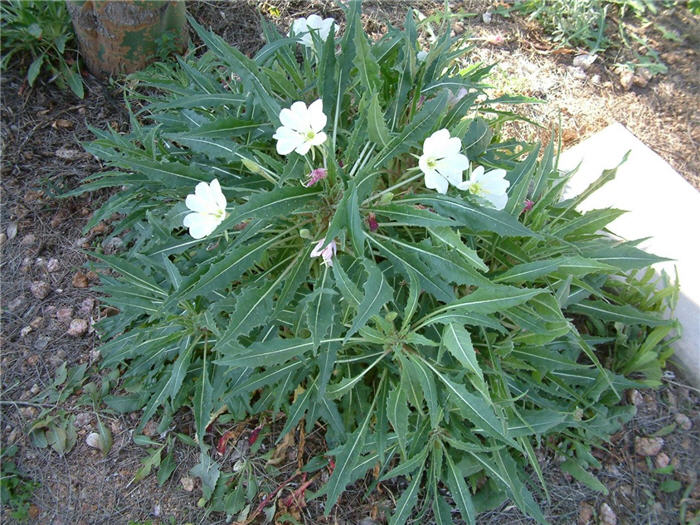| Botanical Name: Oenothera caespitosa | |
| Common Name: Tufted Evening Primrose |

-
Anatomy
-
Culture
-
Design
Plant Type
Ground cover, Perennial
Height Range
Under 1'
Flower Color
White
Flower Season
Spring, Summer
Leaf Color
Grey Green
Bark Color
n/a
Fruit Color
n/a
Fruit Season
n/a
Sun
Full
Water
Low
Growth Rate
Moderate
Soil Type
Sandy, Clay, Rocky
Soil Condition
Average, Poor, Well-drained, Dry
Soil pH
Neutral, Basic
Adverse Factors
n/a
Design Styles
English Cottage, Meadow, Mediterranean, Ranch, Spanish
Accenting Features
Fragrance, Showy Flowers
Seasonal Interest
Spring, Summer
Location Uses
Perennial Border, Parking Strip, Patio, Raised Planter, Walkways
Special Uses
Filler, Mass Planting, Small Spaces
Attracts Wildlife
Hummingbirds
Information by: Stephanie Duer
Photographer: Betsy Thompson
Photographer: Betsy Thompson
-
Description
-
Notes
Tufted evening primrose is a handsome perennial with a tufted, clumping habit, growing about 1 foot tall and 2 feet wide. It has long, narrow leaves that are a dull grey-green with prominent white midrib and toothed or lobed margins with a pinkish tinge. Flowers open white in the morning and fade to pink in the afternoon, and are papery and fragrant. Blooms from April until July. A Utah native.
Grow in full sun and well drained soil; tolerant of clay or sandy soils. Very drought tolerant and not at all tolerant of wet soils. Once established it will require little water.